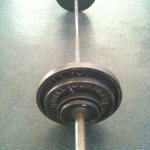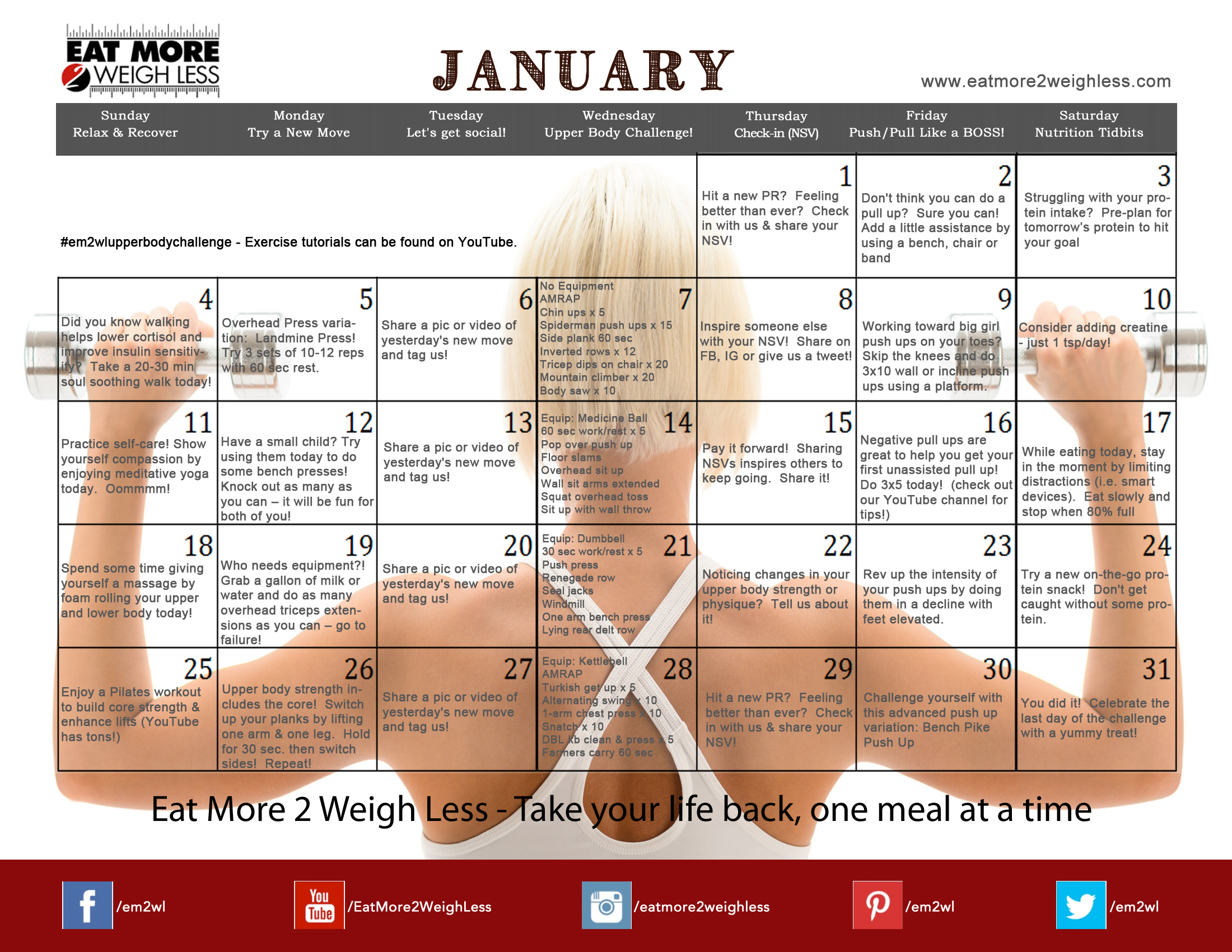Q: I’ve been lifting for about a year. I love my time at the bar, but I’m frustrated by my lack of progress! I see my training partner’s lifts going up consistently, but I can’t seem to push past plateaus! What am I doing wrong?
A: There are a number of possible explanations why you may have hit a plateau with your lifts. Be aware that almost everyone reaches a point where their lifts have stalled, but usually, when your lifts have stalled it is a good sign to look at your programming and determine if a small tweak or two could help.
It’s also important to remember that those new to lifting will make very quick progress regardless of what program they are following. After a few years of lifting however, it’s important to pay closer attention to the details.
Below are a few of the reasons why your lifting may have stalled.
1. Trying to lose fat (cals/carbs too low)
After you get past the stage of newbie gains, it is very difficult to gain strength while in a caloric deficit. You will probably find that you are able to consistently increase strength, gain muscle and lose fat (albeit very slowly) eating closer to your maintenance level calories. This isn’t to say that it can’t be done, but you will probably want to pay very close attention to nutrient timing, making sure to take in plenty of carbohydrates pre- and post-workout.
When trying to lose fat, many tend to view carbs as “optional.” However, if you are desiring to increase strength, cutting out carbs is not the wisest idea. Carbohydrates are your body’s preferred source of energy for intense workouts. Furthermore, when carbohydrates are adequate in the diet, it spares protein from being used for energy, and protein can do its job-build and repair muscle tissue.
When starting a cut, it’s best to decrease carbohydrates and calories very slowly, keeping an eye on your training and the way that you feel and tweaking things accordingly. If you are consistently feeling very run down and missing lifts in the gym, you may want to consider increasing your carbohydrates and possibly cutting back on the amount of fat that you are taking in.
Generally, slow-acting carbohydrates(sweet potatoes, whole grains, and low-glycemic fruits) are best consumed about 30 minutes to an hour prior to your strength training session. This will provide enough time for digestion so that you don’t go into your workout feeling overstuffed. Fast-acting carbohydrates (white potatoes or rice, foods high in sugar, or high-glycemic fruits) are best taken in during the hour after training.
Following an intense strength training session, your cells are depleted of both glucose and glycogen. Cortisol levels are also elevated. Fast-acting carbohydrates cause an increase in insulin levels, which in turn can cause greater muscle growth, when timed appropriately. When consumed, simple carbohydrates can be stored as glycogen, which is the primary source of muscle “fuel” during intense training sessions.
Post workout, elevated insulin levels allow muscle to better utilize stored glycogen for recovery and growth. This also helps cortisol levels to return to normal levels following an intense training session.
Don’t fear carbs, but learn how to use them to complement your training!
2. Too much emphasis on endurance activities
Another common mistake that strength trainers, especially women, make is of doing too many reps, too much cardio, and too many exercises that fatigue the smaller muscle groups. If your primary goal is to gain strength, you will want to keep your reps low and your weights high (3-5 reps at 80-85%1RM) on compound movements. Always do your compound movements (squat, bench, deadlift, rows, and presses) first, and use assistance work as needed to bring up weak points and provide an environment for hypertrophy. Assistance work should still be kept in the range of 8-12 reps for 3-5 sets. If you are able to do more than 12 reps, it is probably a good idea to increase the weight.
Cardio is a question that tends to come up frequently. A lot of women are okay with incorporating some strength training into their workout rotation, but panic at the thought of cutting back on or eliminating cardio. However, if your primary goal is to increase strength, too many endurance activities (i.e., steady-state cardio) can detract from the strength gains you are wanting to see.
If you still want to include some cardiovascular training into your workout rotation, the best scenario would be to add in some short (4-12 minute) metabolic finishers at the end of your strength training sessions. A metabolic finisher is an intense exercise or circuit of exercises designed to increase your body’s fat-burning potential by increasing the “afterburn effect” by increasing the number of calories burned as you recover from your workout. It speeds recovery by returning blood flow to the muscles and improving all-0ver conditioning and athleticism.
Good options for metabolic finishers include heavy kettlebell swings, tire flips, various forms of weighted carries, barbell complexes, sprints, prowler/sled work, and body weight exercises.
3. It’s all in your head
Sometimes, we are our own worst enemy to making progress. If you’re going for a PR, there should be no question in your mind that you will finish the lift. If you approach PR attempts with a fear of failing or a less than confident approach, chances are you will hinder any forward progress.
When you are going for a PR attempt, you must be completely confident as you approach the bar. Training with good spotters that you trust is crucial as you train with very heavy weights, especially as you go for lifts that are near 100% 1RM. There is a time and place for training to failure, but generally speaking, you will always want to end your training session successfully.
If you have any doubt in your mind that you won’t finish a lift, save it for another day.
4. Under- recovery between sets/training sessions
Another common mistake is failing to recover adequately, either in between sets or in between training sessions. It’s critical that the length of your rest periods lines up with your goals. Since it requires about 3 minutes for phosphagen stores to be replenished, 3 minute rest periods are probably most optimal if you are training for pure strength.
Full recovery will allow you to generate the most muscular power for each set, making each set as effective as possible. If you are training for pure strength, slow down in between sets, sip water, and get mentally refocused before beginning your next set.
Make sure that you are taking adequate time between training sessions to recover as well. A good rule of thumb is to take about 48 hours recovery in between intense training sessions. However, you can train opposing body parts on consecutive days (upper body on Monday, lower body Tuesday, rest Wednesday, upper body Thursday, lower body Friday). Make sure that your rest days are truly restful.
In addition, you will want to make sure that you are taking in plenty of high quality food, sleeping well, and keeping stress levels as low as possible to maximize your recovery time!
5. Attempting too much, too soon
It’s important to make sure that the strength goals that you have outlined for yourself are reasonable. Attempting to increase too much weight too soon will most likely result in injury, frustration, and breakdown in form.
Choose a solid, periodized program and determine to stick with it and trust the process! Training with sub-maximal weights will get you stronger over time. On a similar note, testing training maxes too often is extremely taxing on your CNS and will make recovery in between training sessions much more difficult. Focus instead on setting rep PRs, and leave training maxes to once every 4 weeks, at most.
Generally speaking, a reasonable expectation would be to see lower body lifts increase by about 10-20 pounds and upper body lifts increase by about 5-10 pounds over a 8-12 week period of time, provided you are being consistent in your training and paying attention to your nutrition. It may not seem like much, but over time, you will be amazed at your progress if you can learn to be patient with small strength gains.
6. Same old, same old
Our bodies are very good at making adaptations to the stressors that we place upon it. In order to continue to make progress, it is important to switch things up every once in awhile.
If you’re stuck at a strength plateau and have been following the same program or rep scheme for over 12 weeks, it is probably a good idea to switch things up. If you’re used to training in the 8-12 rep range, you may switch to a 5 x 5 for awhile and work on increasing your weights. If you’ve been training with heavy weights and low reps for awhile, you may benefit from an increase in volume. Varying your assistance work is an other great way to keep your body challenged!
However, a word of caution: make sure to change one or two things at a time and stick it out for a minimum of 8-12 weeks before changing another factor. It’s very important to make small changes and make careful notes about what is working. If you change too many things at once, you will never know what’s working!
7. Bad technique
Take the time to learn proper form, especially on the three big lifts (bench, squat, and deadlift). Always train to a full range of motion, and you will get the maximum benefit from each rep and set. If you are unsure about proper form on these lifts, you might benefit greatly from setting up an appointment to meet with a personal trainer, or watching instructional videos on Youtube. Start with the empty bar and be patient with yourself. Once you learn proper technique, it will become easier and easier to add weight to that bar and see the strength gains you desire!

Should you just do cardio to lose weight? How heavy is heavy lifting? Do "strength" DVDs count? What if you don't want to lift? Sign up now for in-depth info on strength training and fat loss. You'll also receive special vids and free workout plans to help you get the most from your time in the gym.
No worries, we hate spam too!
Discover more from Eat More 2 Weigh Less
Subscribe to get the latest posts sent to your email.





Recent Comments